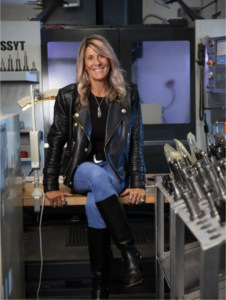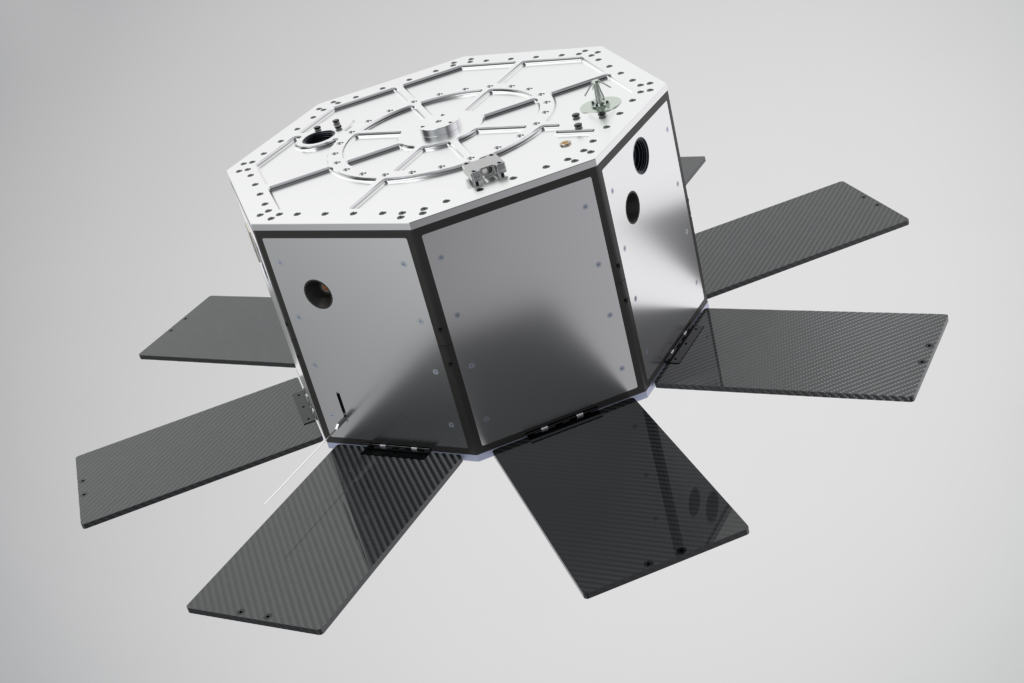It’s easy to misunderstand the purpose of the commercial space sector. For the first few years that they were in the public spotlight, space companies were portrayed almost exclusively as the next generation of tourism for superrich adventurists. In turn, the general response to space companies from anyone who wasn’t specifically interested in traveling to space was something along the lines of, “Wouldn’t those resources be better spent on Earth?”

Sidus Space CEO, Carol Craig. Image courtesy of Sidus Space.
I know that this was more or less my opinion of the space sector until fairly recently — something I mentioned to Carol Craig, the Founder and CEO of Sidus Space, when I interviewed her about the company’s use of additive manufacturing (AM) on its LizzieSatTM satellite platform. After partnering with its preferred AM original equipment manufacturer (OEM), Markforged, on the External Flight Test Platform (EFTP) for the International Space Station (ISS), Sidus and Markforged collaborated again to engineer and print the hexagonal LizzieSat constellation design.
Craig, a former Navy pilot as well as an engineer, has more than a passing familiarity with the types of issues that only research scientists think about. But rather than appearing like someone who was focused on solely theoretical problems with no relevance to everyday life, Craig’s perspective on the sector revealed that at least her space company is primarily focused on what it can do for the planet humans already inhabit.
“All these problems that we have on Earth, that’s absolutely where space can assist. And there’s not a lot of time left,” Craig bluntly stated. “There’s a sense of urgency for Earth right now. That’s why I think it’s so important that we continue to accelerate the space economy and focus on how we can benefit Earth.”
My conversation with Tony Boschi, one of the manufacturing engineers at Sidus Space, reinforced that the space sector is more concerned with making advancements in manufacturing and general industry than it is with traveling to Mars:
“I hate to date myself, but a long time ago — I’ll say at least 20 years ago — I remember SLA machines. With SLA parts, sometimes as soon as you would touch them, they would break. Now, we can make the same parts, but it’s Onyx, and it is fire-resistant. I can also give you all the certifications for it, so you can trace the material. It started with SLA, and now we have moved on to the most advanced materials there are.”
Boschi was, of course, talking about the Onyx composite fiber from Markforged. Both Craig and Boschi made it clear how instrumental Markforged has been to Sidus’s enthusiastic embrace of 3D printing.
Craig recalled, “Markforged was really the one that got us interested in 3D printing. At the time, when you thought about metal 3D printers, they were $500,000 to a million dollars — not something we wanted to do. Then, Markforged came out with its printers — less than a hundred thousand each. That’s when our mindset started to shift. Then, with the success of the flight test platform that we put on the ISS -, that moved us then into this direction.”
The business case for 3D printing satellites is fairly straightforward: conventional methods simply cannot produce as many satellites as the economy needs, as quickly as it needs them. One can easily extrapolate what sorts of lessons could be learned there and apply them to broader global supply chains. Thus, as was the case during the very first phase of the space age — which, after all, is what the term “moonshot” harkens back to — the underlying principle of the space age’s latest iteration is to accelerate industrial ingenuity. Indeed, when I asked Boschi if he thinks that the results from increased activity in manufacturing for space will filter back into the rest of the economy, he stated without hesitation, “I see it happening on a regular basis now.”

LizzieSat constellation platform. Image courtesy of Sidus Space.
“There’s a couple people that I talk to who also rapid prototype,” said Boschi, “and there are things that everybody [in the field] is doing. ‘Oh, well we’re doing this, and we used to do it that way, but now we’re doing it this way because we can.’ And it’s moving! It’s moving in leaps and bounds. …We’re already starting to run, and we’re still in the crawling phase.”
Of course, it’s not just about “pure science.” The space sector does also exist to make end-use parts. But, to that extent, while the preponderance of the public’s attention might go to rockets, AM will likely be most critical, long-term, to satellite production, and satellites are the products from the space sector that are most likely to have a direct impact on the vast majority of humans who plan never to leave the Earth’s atmosphere. Notwithstanding all of the photographs of deep space that NASA is always taking, the point of satellites is very much to collect, manage, and interpret data produced on Earth:
“One of the areas we’re focused on is agriculture,” said Craig. “You can monitor, take pictures, GPS, all with hyperspectral and multi-spectral cameras… You can really drill down and see material composition, the chemical makeup, and they can determine the structural integrity of the soil from there… [Another thing] you can do with satellites is track assets. You can track communications between different assets. John Deere actually put out a request for proposals for satellites to be able to monitor all of their equipment. So, there’s so much that can be done there. It’s just we’re kind of in the infancy at this point. That’s why Sidus is building this platform that’s able to grow and evolve with the growing and evolving space ecosystem.”
Craig made sure to point out, too, that it’s not all simply a net gain: “We’re going to create a whole other set of problems up there, so there’ll be things that have to be worked out as far as satellites and debris. And I know we’re already looking at that…[so we can] be part of the solution, not part of the problem, when it comes to orbital debris.”
In sum, the most important feedback that humanity will gather from the continuously proliferating space economy isn’t answers to questions like, “How long until we can colonize other planets?” Instead, the data that is being gathered will be most significant insofar as it teaches us the best paths forward for success, at all the moonshots demanded by the task of adapting to our rapidly transforming planet. Increasingly, and not just to those in the industry itself, 3D printing is looking like it will make many those impossible goals far more reachable.
Thanks to Carol Craig, Tony Boschi, and Addie Brandfield-Harvey for making time for the interview.
Subscribe to Our Email Newsletter
Stay up-to-date on all the latest news from the 3D printing industry and receive information and offers from third party vendors.
You May Also Like
Further Understanding of 3D Printing Design at ADDITIV Design World
ADDITIV is back once again! This time, the virtual platform for additive manufacturing will be holding the first-ever edition of ADDITIV Design World on May 23rd from 9:00 AM –...
3D Printer Maker EVO-tech Reborn as NEVO3D — Once More With Feeling
EVO-tech was a 3D printing service and original equipment manufacturer established in 2013 and based in Schörfling am Attersee, Austria. The company produced high-quality material extrusion systems featuring linear bearings,...
3D Systems Brings 3D Printed PEEK Cranial Implant to the U.S. with FDA Clearance
For more than 10 years, 3D Systems (NYSE:DDD) has worked hand-in-hand with surgeons to plan over 150,000 patient-specific cases, and develop more than two million instruments and implants from its...
CDFAM Returns to Berlin for Second Annual Symposium
The second CDFAM Computational Design Symposium is scheduled for May 7-8, 2024, in Berlin, and will convene leading experts in computational design across all scales. Building upon the first event...































